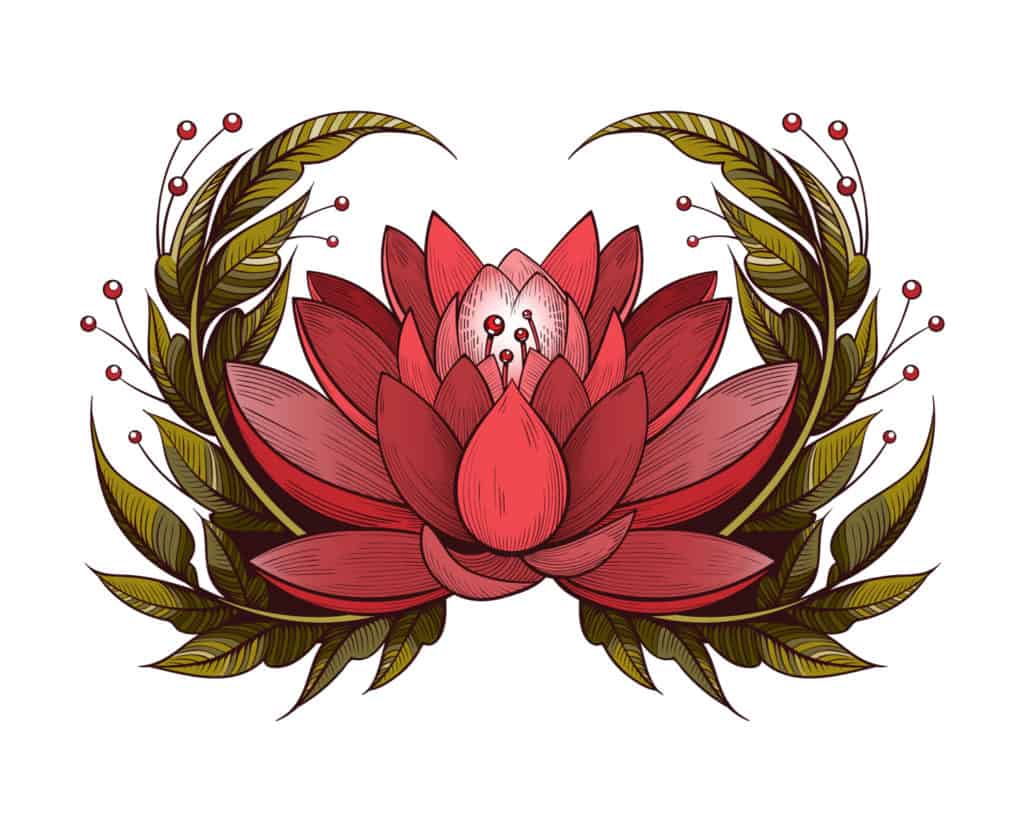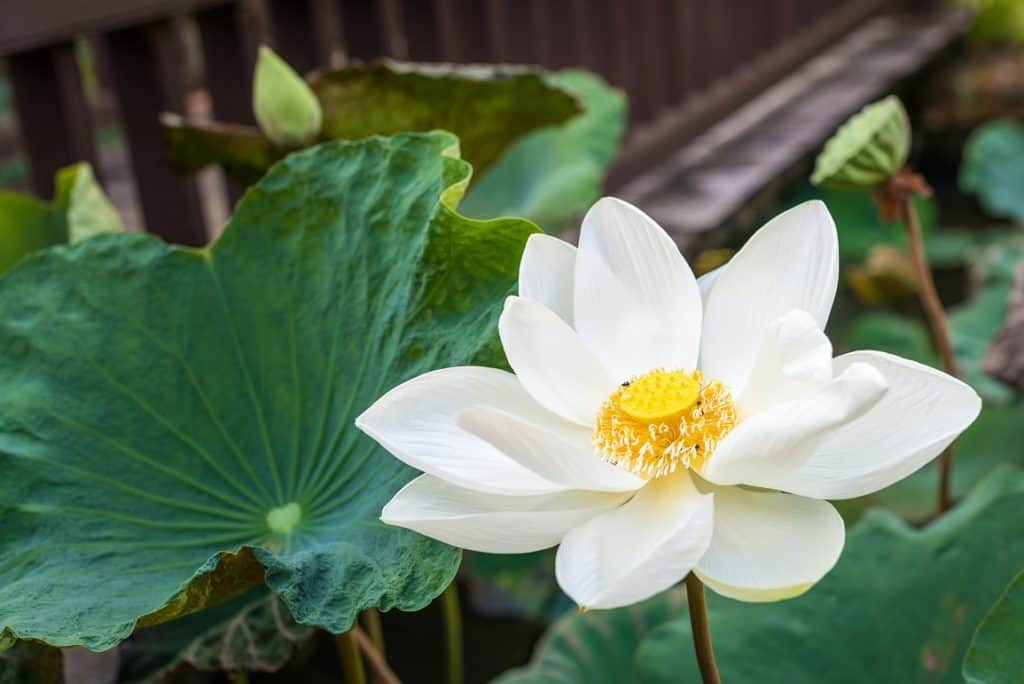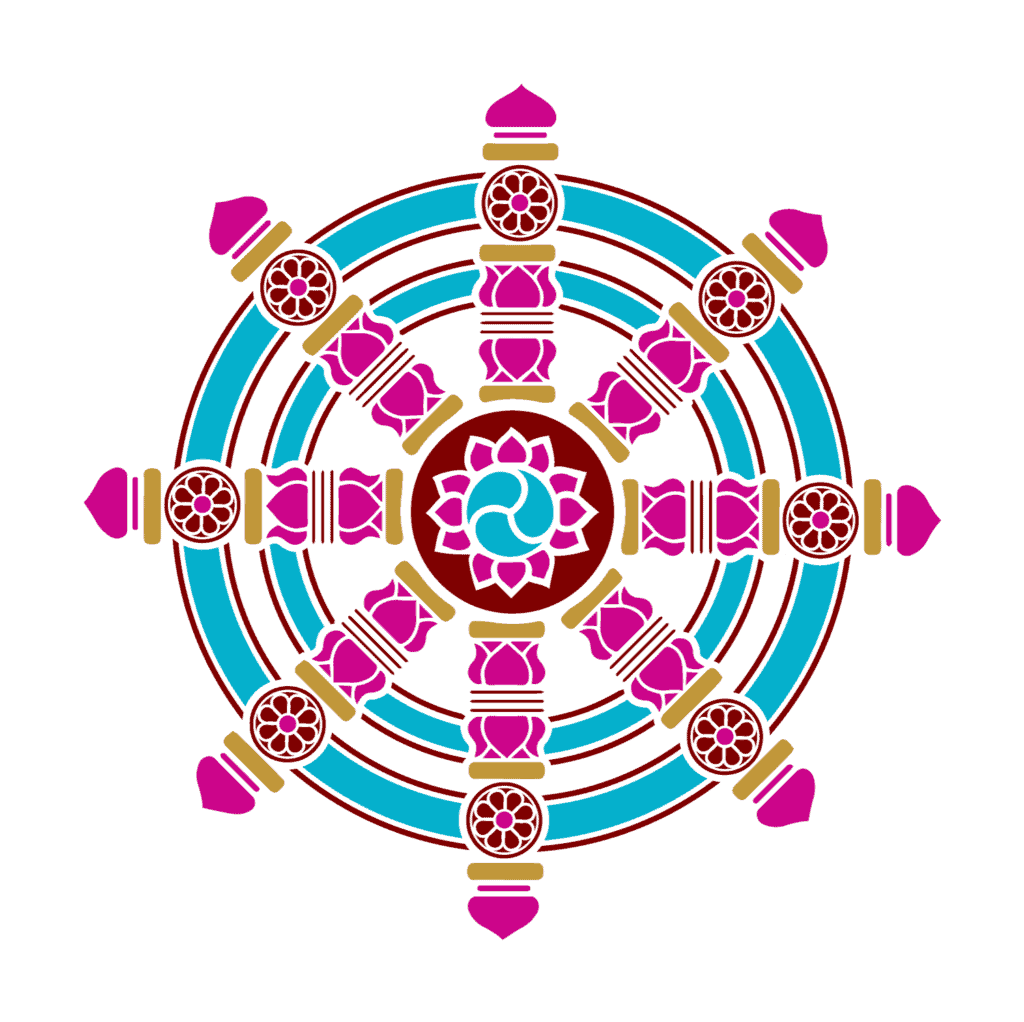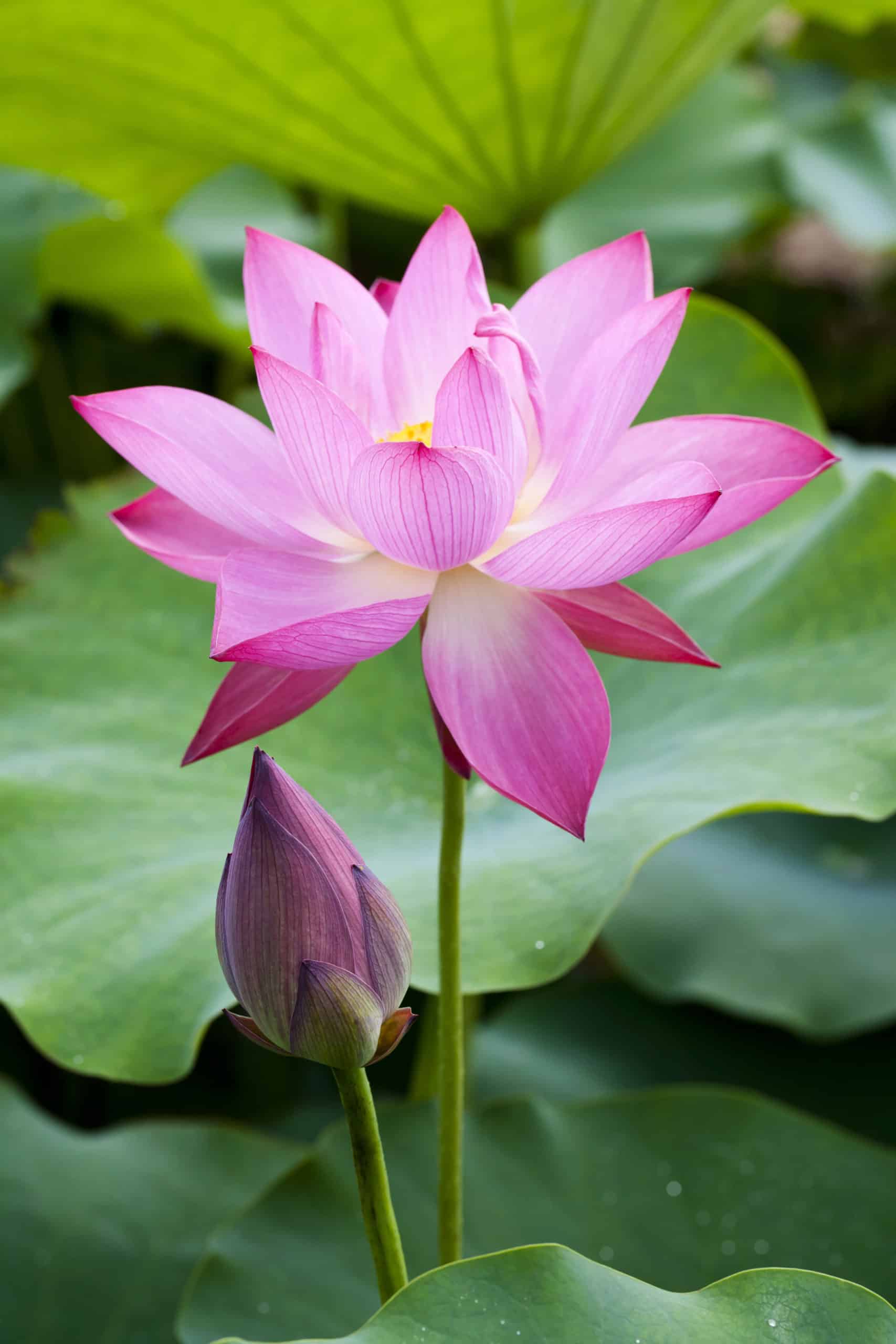There are eight auspicious symbols in Buddhism, which are also known as “the eight symbols of good fortune in Buddhism”, underlining the importance of achieving enlightenment through various teachings of Buddha.

The Origins of The Eight Auspicious Symbols of Buddhism
While originally these symbols represented the offerings made to Buddha (Shakyamuni) by Hindu deities/gods for achieving enlightenment, they were associated with various meanings over time. Today, among several other concepts, they are used to represent various stages of a person’s material and spiritual well-being.
In the earliest periods of history, these symbols were used in important ceremonies like coronations of kings.
In Chinese and Tibetan Buddhism, they are also believed to represent parts of Buddha’s body. Different parts of him, respectively, for each of these faiths.

But why are they called “the auspicious” symbols of Buddhism?
The answer lies within the etymology of the Sanskrit word “Ashtamangala”, the word that has been used to define these symbols throughout history.
It is important to note here that these auspicious symbols were also a part of faiths such as Hinduism and Jainism. They did not just belong to Buddhism and the eight auspicious symbols changed depending on the historical period or culture they were used in.
For instance, the earliest set of symbols included the throne and the swastika (yes, the swastika was actually an important symbol in eastern culture before it was adopted by the Nazis).
With ‘ashta’ and ‘mangala’ meaning ‘eight’ and ‘auspicious’, respectively, the word “Ashtamangala” translates into English as “eight auspicious” and that is where this phrase comes from.
Now, it is time we delved into the meanings associated with each of these eight symbols of good fortune in Buddhism.
The Parasol
The parasol is primarily a symbol of protection. However, in Ancient Indian culture, it also doubled as a symbol for royalty.

The higher the number of parasols one had, the higher their hierarchical social status was believed to be. Royals usually had a total of thirteen parasols. Buddhists later incorporated the tradition into Buddhism. Thus, in some of the earliest representations of the Buddha, he is seen with thirteen parasols.

The parasol also represents enlightenment and prosperity. Prosperity, as back in the day, only the rich could afford luxuries as such.
The symbol is also associated with enlightenment and can best be compared to that of the Halo in Christianity. The idea is that the parasol offers protection that these enlightened ones earn because of the wisdom they gained on the path to enlightenment.
Lotus Flower
The Lotus Flower is one of the most widely recognized symbols of Buddhism, and it primarily represents peace.
It also represents the achievement of enlightenment and primordial purity. Primordial purity refers to the ability to think straight and pure and process information as is without having your thought process tainted by worldly or material influence.

The lotus flower grows from the mud to eventually rise to the surface of the water. According to Buddhist beliefs, The flower’s growth process is an accurate representation of one’s achievement of primordial purity of the mind.
The mud represents evil, worldly pleasures such as attachment and desire. It represents the dark underside of the beautiful flower. In a sense, the symbol shows that the lotus flower, in all its beauty and glory, has a dark side.

It teaches Buddhists that no matter how dark your past is or how deep your roots may be stuck in the dirt, you too can rise to the surface and live a beautiful, clean, and enlightened life.
The lotus also represents birth and is present throughout historical artwork, symbolizing the birth of royalty or other beings of divine origin.
One important thing to note is that the Buddhist lotus flower symbol has eight petals signifying the eight-fold path, one of the main teachings of Buddhism, a way for one to gain insight about one’s existence and reach nirvana.
The symbolism behind the lotus flower also changes depending on the color of the flower.
The white lotus is a symbol of purity of the mind, body, and soul. It also represents the heart of Buddha and is considered a representation of the perfect nature of White Tara, an incarnated Chinese Princess.

Red Lotus represents the heart, love, attachment, and other feelings associated with the heart, including passion.
Blue lotus represents spirituality, wisdom, learning, and intelligence. It is usually depicted as half-open, signifying the victory of spirituality over the senses and the achievement of great knowledge.
The purple lotus has the most variations in depictions. While it primarily represents mysticism and spirituality, the different stages of the flower symbolize various stages of spirituality. Sometimes it is shown as a bud; other times, it is shown as a half or fully blooming flower.
The purple lotus flower symbol usually has three stems, but it also appears with one stem in some depictions.
The pink lotus, which is assumed to be the original lotus symbol used in the early periods of Buddhism, is used to represent Buddha.

The gold lotus is also used to represent Buddha, the Supreme Buddha that is, further highlighting his Supremacy
Conch Shell
The right-turning conch shell is a depiction of the Buddha’s melodious voice, and the color white represents his enlightenment and divinity. Today, it holds several meanings and purposes in Buddhist culture.

As some of its most important uses in today’s practices, the conch shell is used in calls to assemble for religious gatherings and as a vessel to hold holy water.
The conch shell symbolizes the Buddha’s fearlessness in teaching the truth of the Dharma. It also doubles as a symbol of power and as a symbol of protection. Right-turning conch shells are rare, which is why it is considered a sacred item and symbol.
The Endless Knot
The Endless Knot has its roots in several religions and signifies many different teachings. Even within Buddhism, it holds different meanings depending on the type of Buddhism one follows.

In China, the knot is a symbol of longevity, undying love, and continuity. But in traditional Buddhism, as a representation of Buddha’s teaching, it signifies wisdom, compassion, continuity of life, and the perfection of knowledge.
It illustrates how everything in the world is connected, and to attain enlightenment, one must practically apply gained wisdom and knowledge into every aspect of their life.

The knot also represents the endless cycle of birth, death, and rebirth, known as samsara. The design shows that everything is interconnected, and death and birth are a part of life. The symbol symbolizes the endless interconnectivity of human existence.
The endless knot is also a representation of Karma, a fundamental concept in the teachings of Buddha. The knot is a visual representation of the concept of what goes around comes back around, and serves as a reminder to extend only good into the world.
The Fish
Initially, the pair of fish represented the two great rivers in India, the Ganges and the Yamuna. Buddhists later adopted the symbol by Buddhism and used it to describe the freedom of will, the realization of which is an essential aspect of Buddhism.

The Supreme Buddha taught that one must not follow blind faith but must make conscious decisions regarding their life.
The fish also represent freedom of movement, happiness, and fertility.

In most depictions, the fish are drawn as carps which are considered sacred for their magnificent size and long lives. Thus, the fish symbol also represents abundance and longevity.
The Vase
The vase goes by many names, including ‘the treasure vase’ or ‘the vase of inexhaustible treasures’. The symbol consists of an image of a traditional vase, ornately decked with a jewel or two protruding from its mouth.

The vase symbol represents the wealth of Buddha’s teachings. It is always overflowing with wealth and sometimes even has lotus flowers painted on it.
The idea behind it is to show that by following Buddha’s path, one can achieve never-ending wealth, metaphorically speaking. Wealth here can mean many things besides its literal meaning, including wisdom, knowledge, happiness, peace and power. Most importantly, though, the vase represents the value of Buddha’s teachings.

The Victory Banner
In Buddhism, the victory banner represents Buddha’s victory over all hindrances on the path to achieving enlightenment. Legend has it that the banner appeared on top of Mount Meru, signifying Buddha’s win over the universe’s temptations.

Today, the banner represents how one can overcome all hurdles to achieve enlightenment.
It represents happiness, victory, power, attainment of wisdom, and knowledge over ignorance, among some other concepts. Whatever your struggle may be, the victory banner can serve as a symbol of hope and strength to help you overcome all hindrances. That is the main way to interpret the symbol.

The Eight Spoked Wheel Also Known As The Dharma Wheel
The Eight-spoked wheel or the Dharma wheel represents the eight-fold path to achieving enlightenment as laid down by the Buddha.
The wheel can help steer or guide your vessel in the right direction. Buddhists believe the wheel aids the attainment of perfection.

The Dharma wheel comprises three main components; the spokes, the center, and the rim.
The center represents ethics, which according to Buddha, help stabilize the mind and aid in the achievement of purity in mind.

The rim represents meditation and concentration that help harmonize the mind and the body, aiding in following the eight-fold path that the spokes represent.

The eight spokes represent:
- right kind of view
- right way of thinking
- right kind of speech
- right kind of action
- right kind of livelihood
- right way of diligence
- right form of mindfulness
- right way of concentration.
On an important side note, the Dharma wheel may represent different things based on its design.
If the center has three swirls, it shows the three jewels, Dharma, Buddha, and Sangha.

If it is drawn with four swirls, it represents Buddha’s teachings of the Four Noble Truths.
If the God of Death, Yama, appears to be turning the wheel, it indicates the inevitability of death.
The Dharma wheel depicted alongside Buddha represents freedom or liberation.

In Buddhist faith, the Dharma Wheel is the last of the eight auspicious symbols and represents the final enlightenment stage.
Representing the cycles of death and in order to reach the ultimate stage of enlightenment, that is to say, nirvana, the dharma wheel is also a symbol of rebirth.
According to some historical accounts, the Dharma Wheel is a result of the combination of the Victory Banner and the Endless Knot.



